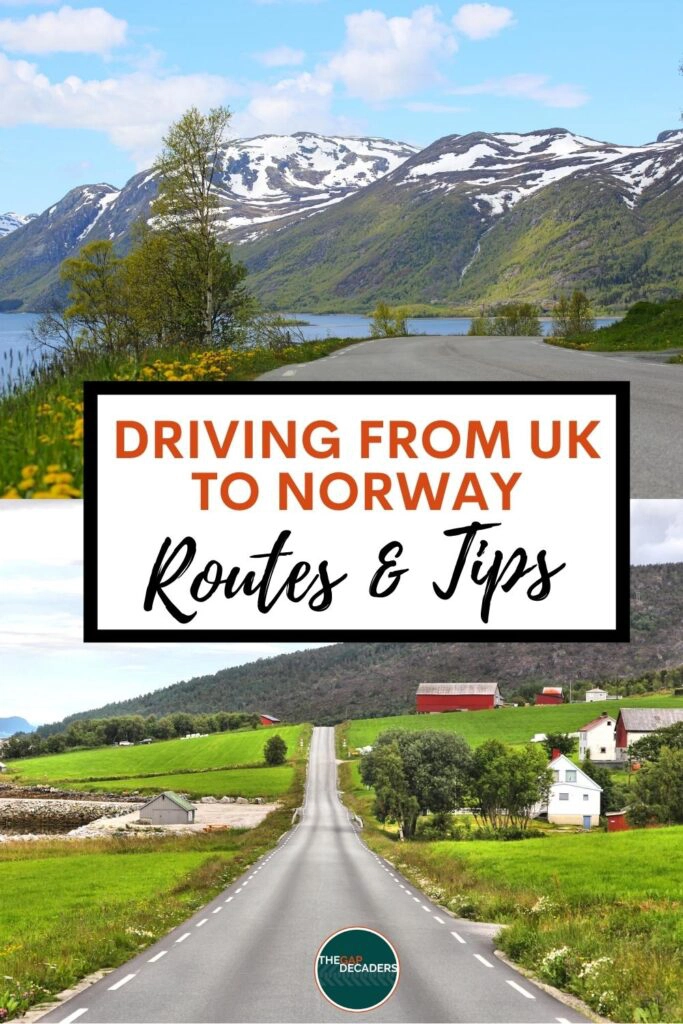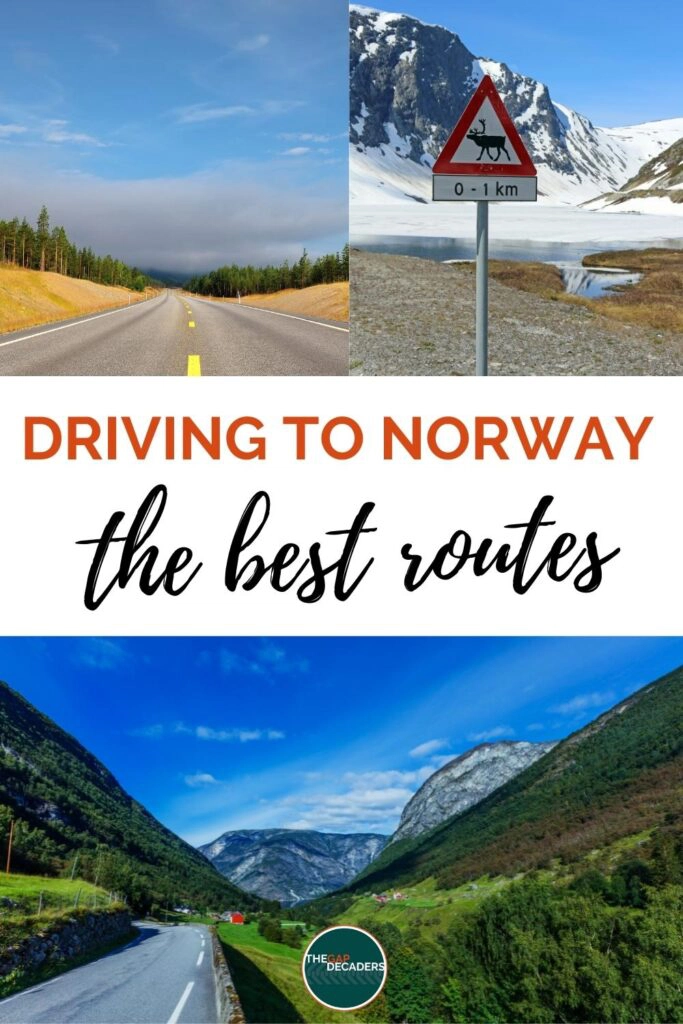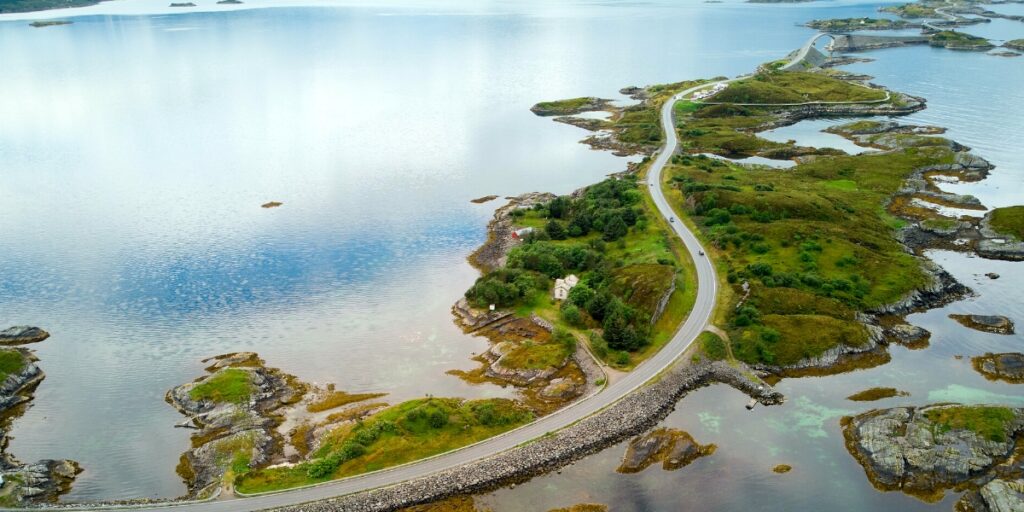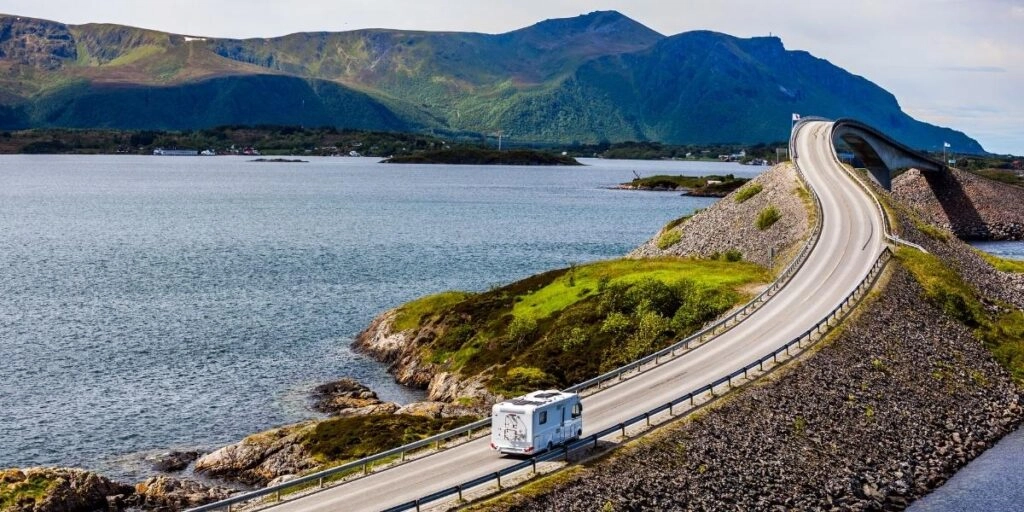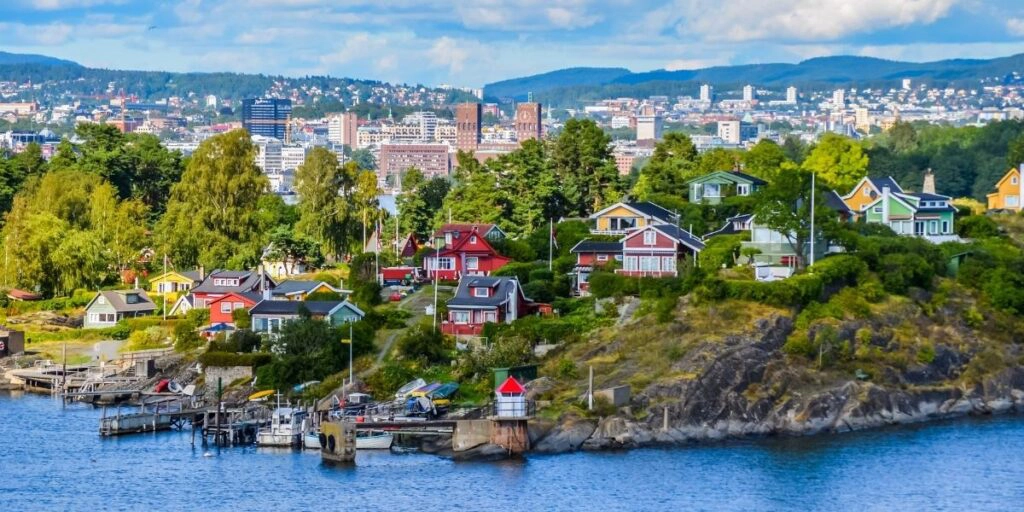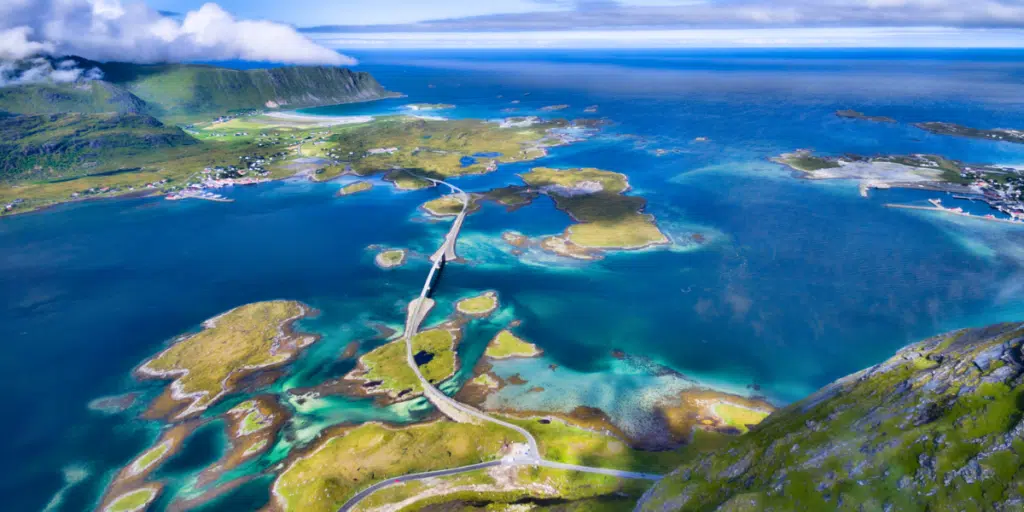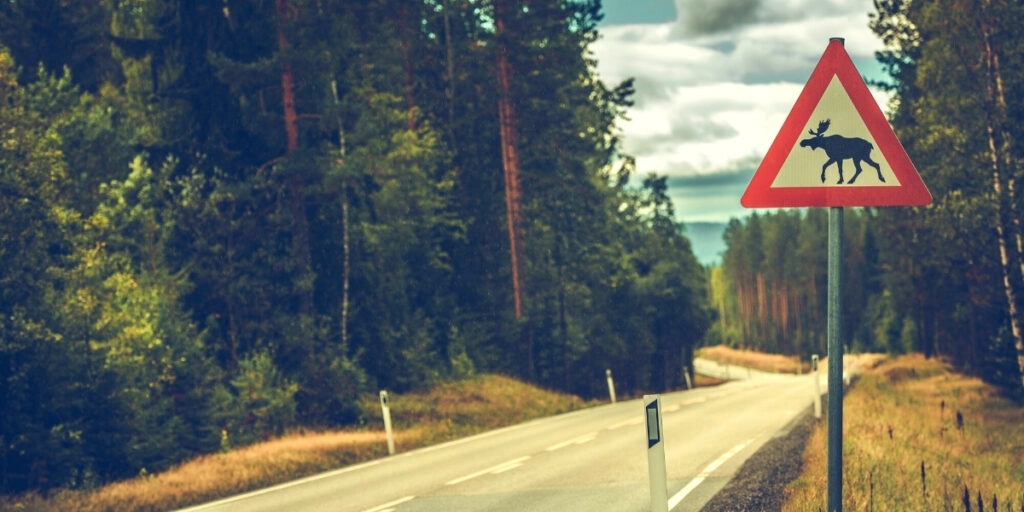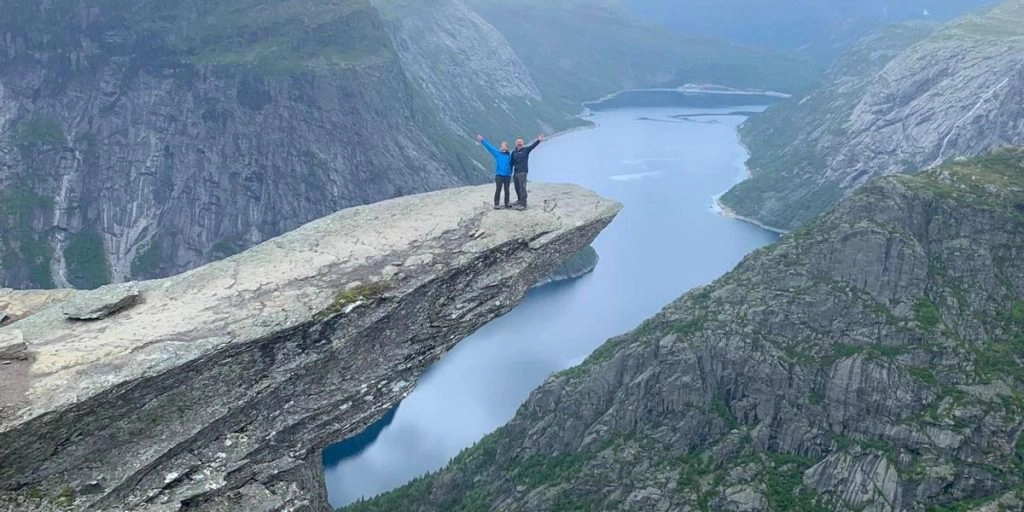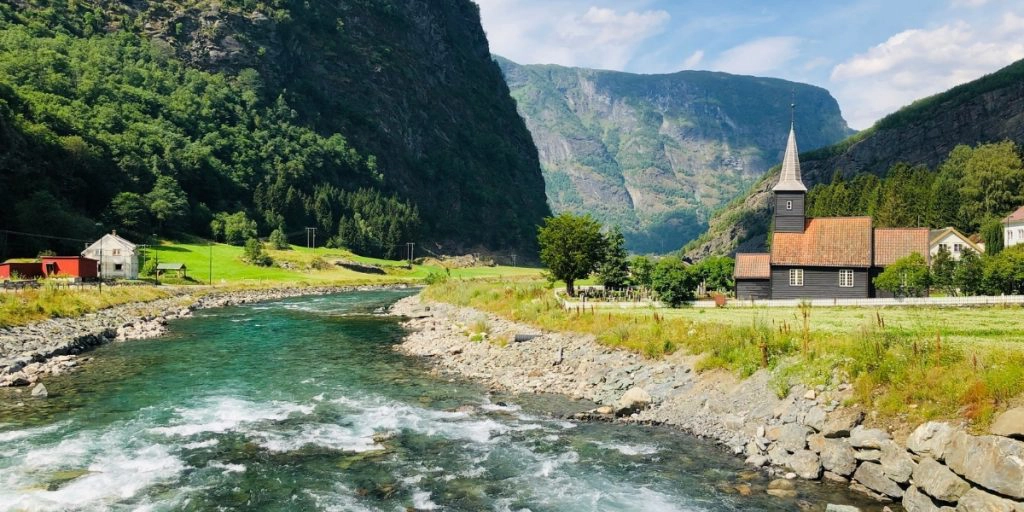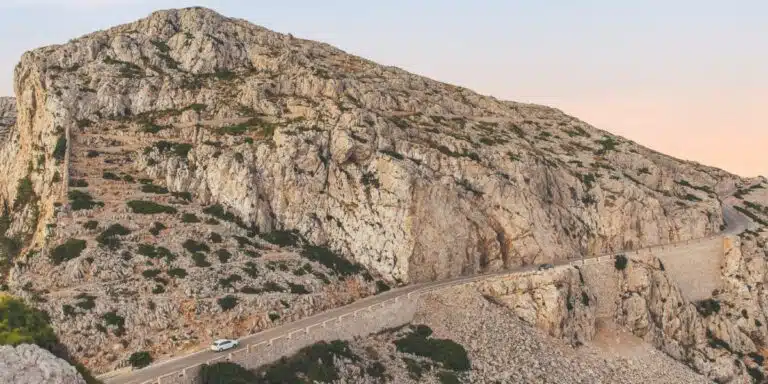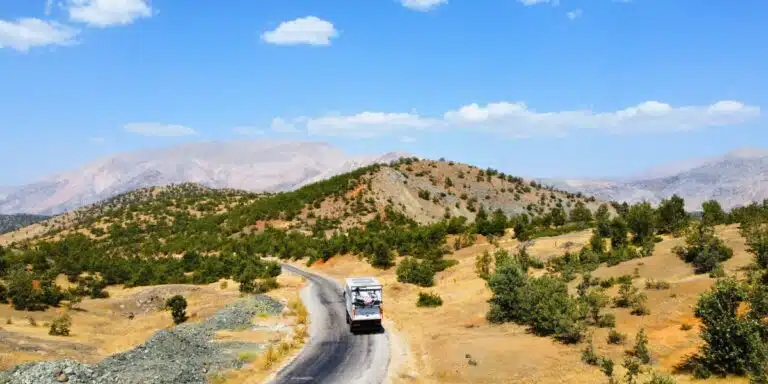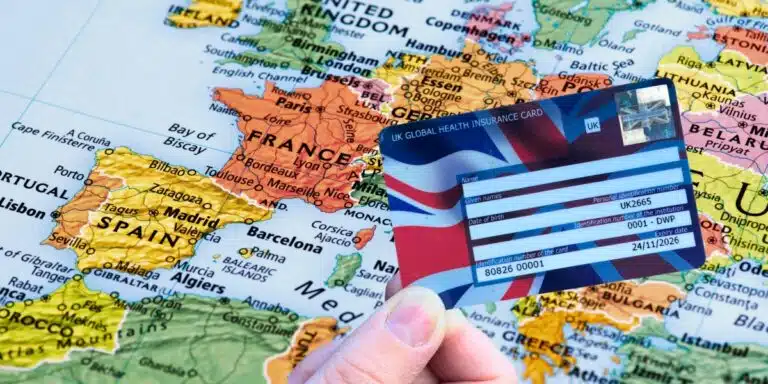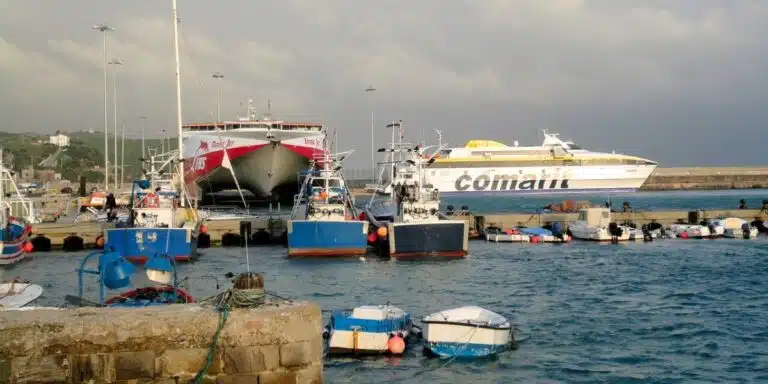This post may contain affiliate links, from which we earn an income. Click here to read our affiliate policy.
Best routes to Norway from the United Kingdom
Are you dreaming of an unforgettable road trip or adventure in Norway but prefer to skip the hassle of flying? Good news – getting there by car, campervan, or motorbike is easier than you think! With a variety of driving routes from the UK, you’ll have the freedom to explore Norway’s stunning landscapes at your own pace.
Our comprehensive guide has everything you need to plan the perfect journey with detailed routes, maps, costs, and comparisons, plus insider tips on ferries to Norway and driving once you arrive.
Whether you’re chasing fjords, mountains, or the northern lights, we’ll help you find the best route so you can roll into Norway refreshed and ready for adventure!
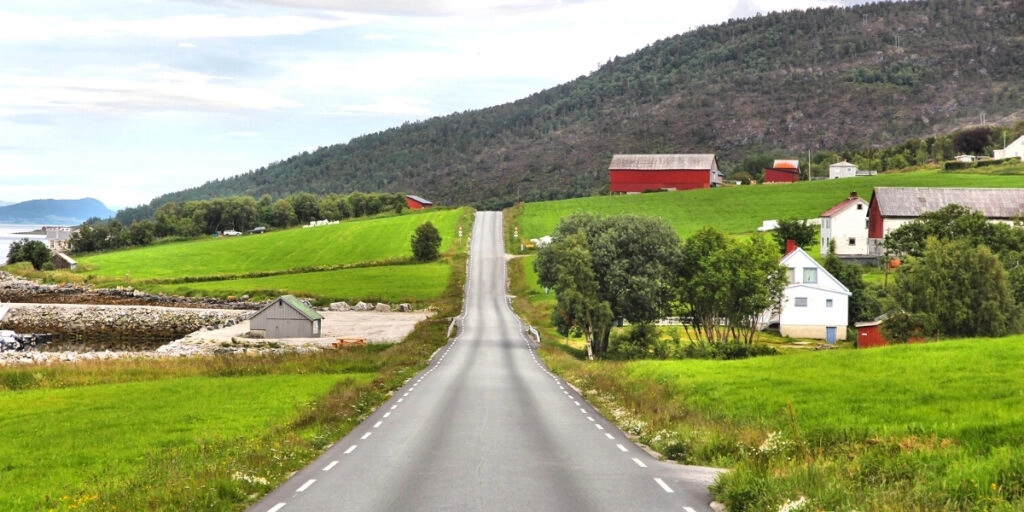
Crossing the English Channel
Before you even think about getting to Norway from continental Europe, you need to get to Europe first, which means crossing the English Channel or the North Sea.
We recommend finding the best deals and crossings from the UK with Direct Ferries, who make it easier to compare timings, routes and costs in one place.
Ferries from UK to Norway
Until 2008, you could get a direct DFDS ferry from Newcastle to Bergen, but that route no longer operates. Sadly, there is now no direct ferry to Norway from UK, or even direct to Germany from UK. You’ll need to cross to one of the French or Dutch ports and drive north.
You may have read about getting a freight ferry from England to Norway. The Immingham to Norway route was a popular option for car drivers, but DFDS Norway states on their website;
“The DFDS freight port of Immingham can accept commercial freight drivers with their loads. Due to UKBF port approval, private passengers are not permitted to be carried through Immingham. This means that we can no longer accept leisure fare paying passengers on the freight routes through Immingham.”
This means there is no direct ferry from the United Kingdom to Norway. But you can still get to Norway in less than 24 hours if you pick the right routes and share the driving. We’ll show you how.
EuroTunnel Le Shuttle
The fastest route to Europe is the Eurotunnel Le Shuttle to Calais from Folkstone. The crossing under the channel takes 35 minutes, and with a quick check in and boarding process, you can be in France proper within an hour.
This crossing is ideal if you are driving to Norway from the UK with a dog, or just want to get to the other side as quickly as possible.
Dover to Calais
Certainly, the quickest way by ferry is the Dover-Calais route, on which both P&O and DFDS Seaways operate up to 40 crossings between them a day in July and August. Taking just 90 minutes, you’ll have time on board for a meal or drink and perhaps a quick snooze.
Getting on and off can take time, as they have to piece all the vehicles together like a jigsaw puzzle. It’s not as quick as the shuttle, but very possibly cheaper, especially if you can be flexible with crossing times and want a break from time in the car.
Crossing to the Netherlands
More expensive and quite a bit longer than the Dover to Calais route, the crossings from Harwich, Hull and Newcastle to the Netherlands may prove to be cost-effective for your road trip, but only if you don’t live in the southeast of England.
The Stena Line Harwich-Hook of Holland route operates daily at 9am, with the crossing taking around seven hours.
If you cross from Hull to Rotterdam with P&O, their daily crossing departs at 20.30pm and takes around eleven hours, meaning you arrive refreshed and ready for a full day’s drive.
The DFDS Newcastle to Amsterdam crossing is also overnight, but takes nearly 16 hours and is a but more expensive, although ideal for those starting their Norway trip in the north of the UK.
Other Popular Crossings
There are a handful of other routes out of Newhaven, Folkestone and Poole which are also worth exploring. You could also consider sailing to Le Havre or St Malo from Portsmouth or Dunkirk from Dover.
The key here is to be flexible with dates (but don’t book an open ticket if you’re on a budget; they are always more expensive) and times to get the best deals …this is where you may just find a bargain.
RELATED POST: 19 Helpful Long Distance Driving Tips
Is this your first time visiting Norway? Get all the information you need in our Norway Travel Guide, including what to pack, the best time of year to go, getting there and practical tips to help you have the best trip!
Route Planner from Mainland Europe to Norway
There are essentially two ways to get from mainland Europe to Norway. One involves crossing the water via a series of bridges the other involves getting a ferry.
To achieve a level playing field for comparison, we’ll assume you’re travelling from Calais to Oslo in an E5 1.8 litre petrol car. All ferry costs are approximate for a one-way crossing and will vary depending on when you sail, the type and size of your vehicle, the number of passengers and the type of cabin you book if you decide to take a ferry.
UK to Norway Route Map
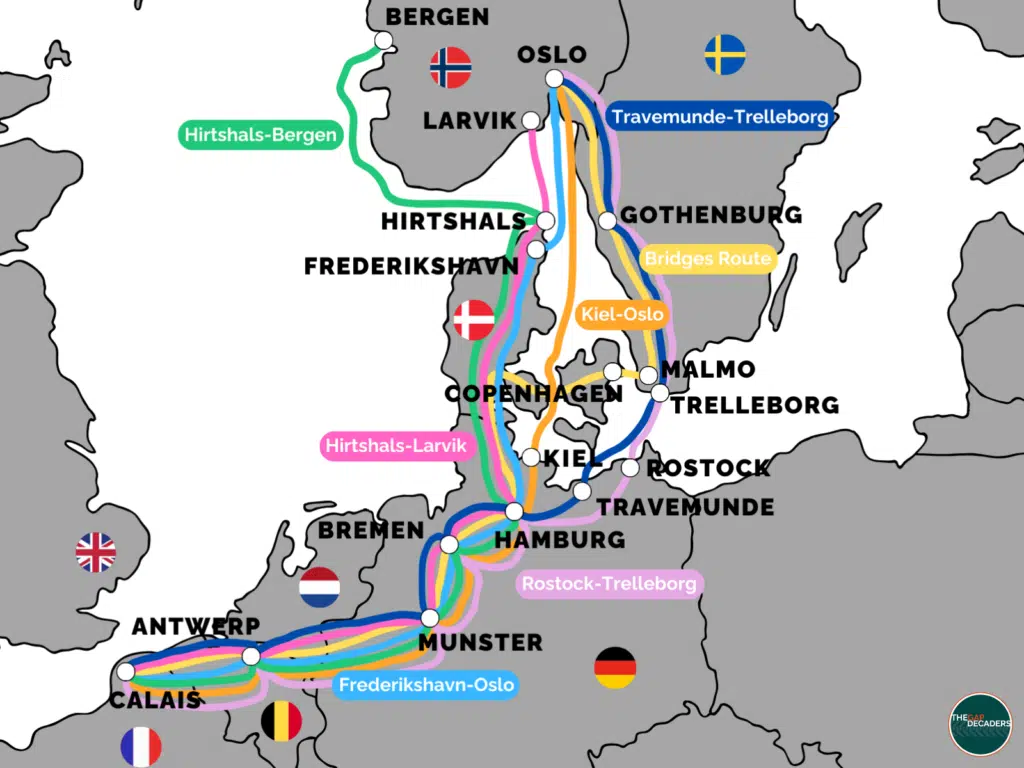
Quick Comparison of Routes to Norway
| Route | Drive km | Drive Time | Cost € |
|---|---|---|---|
| 1. The Bridges | 1822 | 19 | 350 |
| 2. Frederikshavn-Oslo | 1291 | 15 | 266 |
| 3. Hirtshals-Larvik | 1395 | 15 | 318 |
| 4. Hirtshals-Bergen | 1262 | 13 | 444 |
| 5. Kiel-Oslo | 843 | 9 | 779 |
| 6. Travemunde-Trelleborg | 1425 | 15 | 364 |
| 7. Rostock-Trelleborg | 1523 | 17 | 339 |
The Bridges
Storebaelt & Oresund
Route 1: Calais – Antwerp – Munster – Bremen – Hamburg – Flensburg – Copenhagen – Malmo – Gothenburg – Oslo
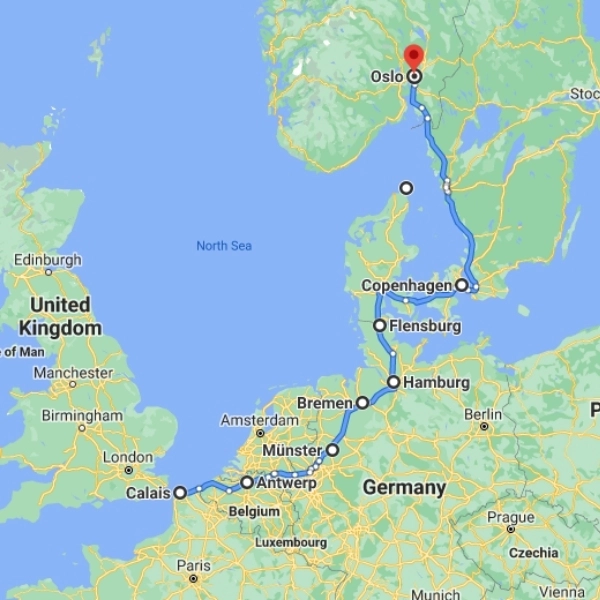
This route involves driving up through Denmark before heading east to take the Storebaelt Bridge (Great Belt Bridge) in Denmark en route to Copenhagen and then crossing the Oresund Bridge (of BBC The Bridge fame) from Copenhagen to Malmo in Sweden.
This option gives you the opportunity to see historic Hamburg and beautiful Copenhagen on the way through and even to road trip Denmark as you experience both incredible bridges, their views and architecture.
The downside of this scenic route to Norway is the continual and long hours of driving and the cost. Discounts are available for return journeys and if you sign up for an account online. Check the bridge’s official websites – https://www.oresundsbron.com/en/prices and https://storebaelt.dk/en/prices-and-discounts/private/. Once you get to Sweden you still have a six-hour motorway drive ahead of you, so you may need to book accommodation on route.
This is also an expensive route if you’re driving to Norway in a motorhome or campervan, as the costs increase exponentially the longer and heavier your vehicle. In a 7m motorhome, the bridge crossings alone will cost over €160 without discounts.
The Ferries
Ferries from Denmark to Norway
Getting a ferry to Norway from Denmark avoids the bridges and the long drive up the Swedish coast. Time it right and the ferry can also provide your overnight accommodation, landing you in Scandinavia feeling refreshed and ready to drive.
Route 2: Port of Calais – Antwerp – Munster – Bremen – Hamburg – Flensburg – Frederikshavn – Port of Oslo
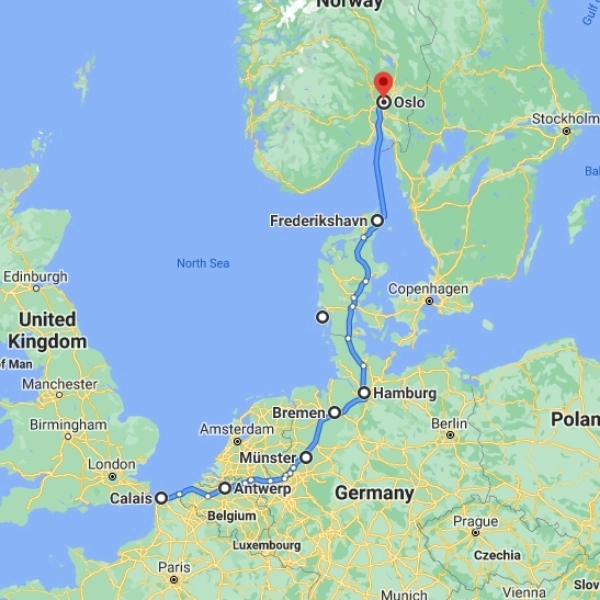
This northern Denmark to Norway ferry is a great budget option, and this is the cheapest route to Norway from the UK. With low driving hours, this nine-and-a-half-hour crossing has daily departures at 11.45pm every night, arriving in Oslo at 9.15am the following morning.
Get an early boat from the UK to Calais or one of the Dutch ports and spend your first night onboard, meaning you don’t need to book a hotel on the way. Find out about the Frederikshavn to Oslo crossing here.
RELATED POST: One Day Oslo Itinerary + Map, Guide & Tips
Route 3: Port of Calais – Antwerp – Munster – Bremen – Hamburg – Flensburg – Hirtshals – Larvik – Oslo
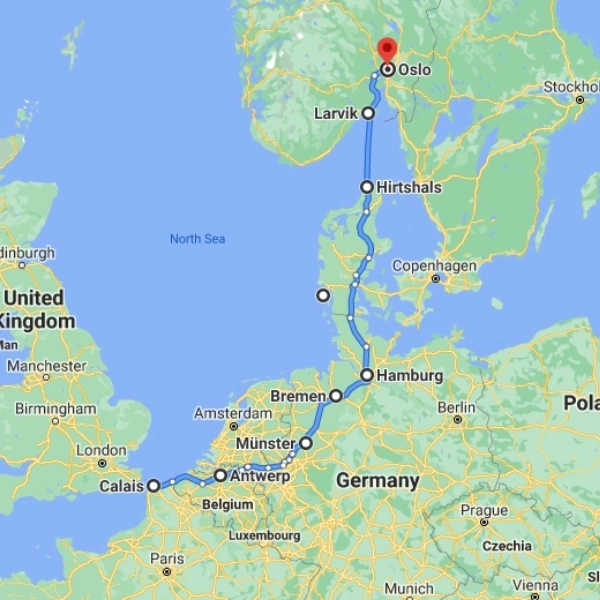
This is another good route into Norway. Larvik is just a few hours south of Oslo, and the ferry crossing only takes four hours. This is a better option if you’re planning to explore the beautiful area of southern Norway around Kristiansand or if you want to pick up the fast E134 to the western fjords. Get info about the Hirtshals to Larvik ferry here.
Ferries to the Western Fjords
Route 4: Calais – Antwerp – Munster – Bremen – Hamburg – Hirtshals – Bergen
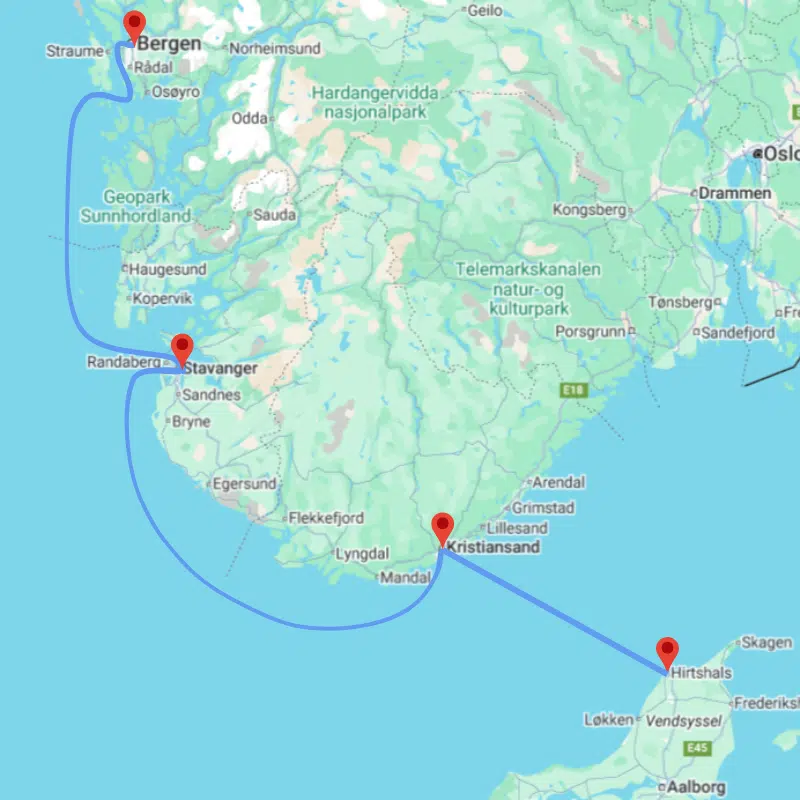
Hirtshals in Denmark is a great port to sail from if you’re heading to the western fjords or towards northern Norway for thrilling mountain passes and northern lights hunting. From Hirtshals you can get a direct ferry to Bergen in sixteen hours, Stavanger in ten hours and Kristiansand in four hours with Fjord Line.
These ferry routes are definitely an option worth considering if you’re planning to drive up the west coast, visit the fjords or head to some of the popular tourist areas. The price of the longer crossings balanced against fuel and tolls has to be worth considering. Find out more information about sailing from Hirtshals here.
Ferries from Germany to Norway
Route 5: Calais – Antwerp – Munster – Bremen – Hamburg – Kiel – Port of Oslo
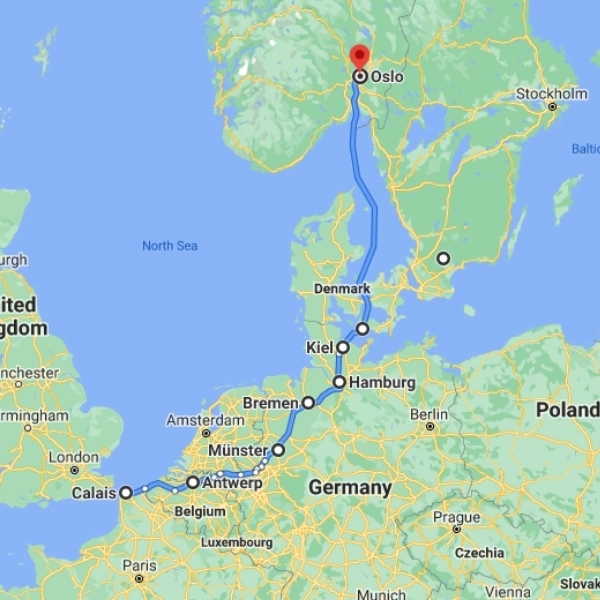
This 20-hour crossing from Kiel in Germany takes you directly into Oslo. Leaving at 2pm daily, you arrive at 10am the following morning. This crossing is more like a mini cruise than a ferry, with plush lounges and dining, spa facilities and well-appointed cabins.
These Color Line sailings from Germany to Norway are not for the budget-conscious but a relaxing experience to start your Norway holiday. Find out more about the Keil to Oslo crossing here.
Ferries from Germany to Sweden
Route 6: Calais – Antwerp – Munster – Bremen – Hamburg – Travemunde – Trelleborg- Gothenburg – Oslo
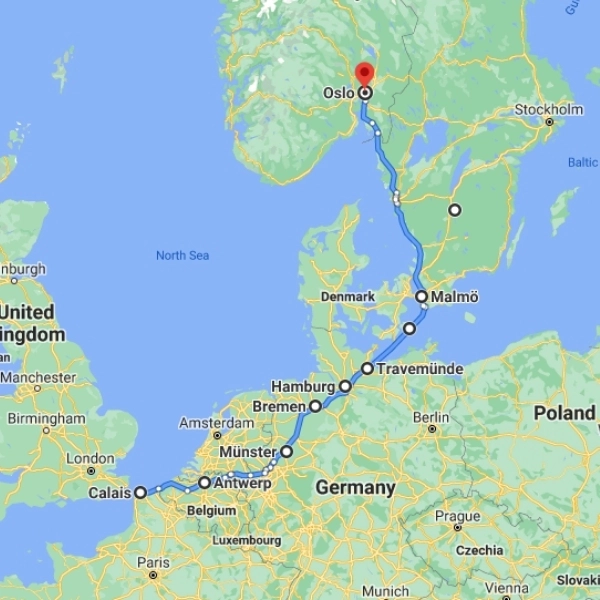
From Travemunde to the northeast of Hamburg, a nine-hour crossing gets you into Trelleborg, south of Malmo. You still have the six hour drive up through Gothenburg to Oslo, and will miss the wonders of Copenhagen.
Day crossings to Sweden are cheaper but an overnight crossing means you can have a proper night’s sleep and wake refreshed and ready to go in the morning. Time it right, and you’ll be able to get to Oslo without booking a hotel on route. Click here to check the Travemunde to Trelleborg route and deals.
Route 7: Antwerp – Munster – Bremen – Hamburg – Rostock – Trelleborg – Gothenburg – Oslo
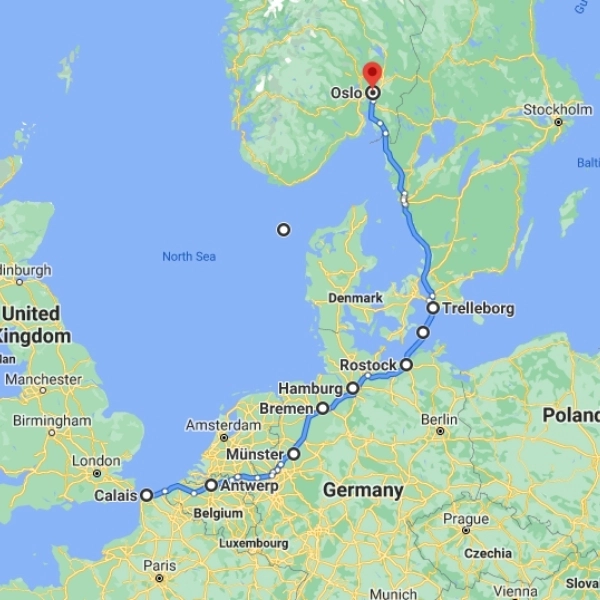
From Rostock, another few hours on from Travemunde, the seven-hour overnight crossing gets you into Trelleborg early in the morning.
What you make up for in crossing time, you lose in driving time. Your choice between departing Germany from Rostock or Travemunde might just come down to the best costs on the day you want to travel. Find out more about the Rostock to Travemunde ferry here.
Ferries from Netherlands to Norway
Holland Norway Lines introduced a new route from the Netherlands to Norway in April 2022, departing for Kristiansand from Eemshaven, Cuxhaven and Emden. Sadly, In September 2023, the service ceased to operate, and Holland Norway Lines went into administration.
There are now no ferries operating from the Netherlands to Norway and none operating from Germany west of Hamburg.
Other No-Fly Options
If you’re thinking the drive to Norway from the UK sounds long, tiring and expensive, you could consider getting to Norway by train and then hire a car. Another great no-fly option, but trains and car rentals are likely to be more expensive, and the journey will take longer.
Train and rail expert The Man in Seat 61 says there are three options for you to choose from. Visit the website for more information on train times, fares and tickets:
RELATED POST: Road Trip on a Budget: 36 Tips to Save Money in Europe
Travelling in Europe
Travelling to Norway from the UK means observing the rules and regulations of up to seven countries depending on your route – France, Belgium, Netherlands, Germany, Denmark, Sweden and Norway itself.
That means you’ll need different kit and equipment in each country – sigh – but happily, lots of the basic travel and road laws in each country are the same:
Required Documents for EU Travel
Passport: You must have at least three months remaining on your passport (issued in the past ten years) at your intended date of departure.
Vehicle Insurance: You must have at least 3rd party insurance for your vehicle. You do not require a green card to prove you have vehicle insurance cover when travelling in Europe if your car is registered in the EU or UK.
Licence: You must have a valid UK licence. This allows you to drive in all EU countries for up to six months. If you only have a paper driving licence or a licence issued in Gibraltar, Guernsey, Jersey or the Isle of Man then you will need an International Driving Permit.
Registration Document: You must carry the original V5C registration document for your vehicle.
GHIC: Whilst it is not mandatory, we strongly recommend carrying a GHIC card which covers you for emergency and necessary healthcare in the EU. Find out why the GHIC is an essential for touring in Europe!
Travel Insurance: The UK GHIC is not a replacement for travel insurance and will not cover things like repatriation, medical evacuation, specialist treatment or ongoing care. We recommend True Traveller for their 5-star TrustPilot reviews, variety of cover options, best activities cover as standard, great prices, and excellent service.
Breakdown Cover: Although not mandatory, it’s a good idea to have cover when driving in Europe. We recommend RAC Arrival, whose motorhome cover has no weight, height or length restriction.
Vehicle Safety Requirements in the EU
Country Sticker: You must display a country sticker on the rear of your vehicle unless your numberplate displays the flag or origin. For UK registered vehicles this needs to be a UK sticker instead of the old style GB sticker.
Headlights: Headlight beam converters must be in use unless you can adjust your headlights automatically.
Seat Belts: Seat belts must be worn by the driver and all passengers in all the countries of the EU.
Using Mobile Phones: It is illegal in all countries of the EU to use a mobile phone when driving. In addition, in France, you are not even allowed to use a mobile phone using a hands-free device. On the spot fines are applicable in all countries if you are caught using a phone at the wheel.
Drive on the Right Side: Every EU country apart from Ireland drives on the right-hand side of the road. This means that when you’re at a junction or roundabout, the vehicle approaching from the right has priority over the one coming from the left unless other signage is in place.
In an Accident: If you have an accident you’ll need to complete the EU Accident Statement, which you can find to download in English in our free resource library if your insurer hasn’t provided one. Stop safely and use your hazard lights and warning triangle to alert other drivers. Exchange details (a translate app comes in handy here) and take lots of photos to add to your form when you submit it to the insurers. If the other party won’t give details or there has been an injury, you should call the police on 112.
Things to Know Before Driving to Norway from the UK
Norway’s Borders
Norway has open borders with Sweden and Finland, however, they still practice random border checks at some popular road crossings. You will find a ‘hard’ border if you arrive in Norway by ferry, and will need to complete a customs declaration form before you enter the country.
If you are travelling north through Sweden from the ferry or bridges, you will cross the border at Svinesund on the E6, where there is a permanent customs post. There is often queueing traffic to cross, although not many vehicles are actually stopped or searched.
The allowance for alcohol is small (1L of spirits over 22% volume, 1.5L wine less than 22% volume and 2L of beer up to 4.7% volume) and given the cost of buying booze in Norway, it’s tempting to stock up at the large supermarket in Sweden just before the Norwegian border. If you do get caught carrying more than your allowance, the fines can be large.
Visas for Norway
You do not need a visa to enter Norway. However, at some point in 2025, the EU will introduce the ETIAS (European Travel Information and Authorisation System), which will be an additional entry requirement for visa-exempt travellers (incluing Brits) and will involve the traveller registering their details online before travelling, mainly for security purposes.
Length of Stay in Norway
Norway is not a member state of the European Union. However, it is associated with the Union through its membership of the European Economic Area (EEA) and is an associate member of the Schengen Area, meaning you must include Norway in your 90 in 180 days calculation.
The 90 in 180 day rule works on a rolling basis and it can be difficult to work out whether you are within the rules or not, especially if you have visited the Schengen area on several occasions in the preceding 180 days. Use a Schengen calculator to ensure that you stick to the right number of days and stay within the rules.
Taking Food to Norway
The European Commission says the following:
Mobile Data in Norway
All UK providers limit data usage in the EU in some way or another. It’s best to check with your provider what their fair usage policy says before travelling, to make sure you don’t run up a big bill.
You can find lots of information in our guide to the best SIM cards in Europe, especially if you’re planning to be away for more than a few weeks.
Taking Pets to Norway
You can take dogs, cats and even ferrets to Norway. You’ll need to book a pet-friendly cabin or kennels on the ferry or travel via the tunnel from the UK. Your pet will need a microchip, a valid rabies vaccination and an animal health certificate (AHC).
When pets are travelling to Norway from countries in the EU/EEA (such as Germany or Denmark) the animal and necessary documentation must be presented to Norwegian Customs for checking. Walk or drive through the red zone in the Customs area to present your paperwork and pet.
When travelling to Norway from Sweden, the animal and documentation need not be shown to the Norwegian Customs if the animal has been kept legally in Sweden and meets all requirements for entry.
It can take some time to get all the documents together and the vaccines organised, so make sure you start the process well in advance.
Norway Travel Ideas
Driving in Norway
Norway is a fantastic country for a driving holiday. Modern roads, national tourist routes, huge tunnels to get you under the fjords, and the Trollstigen mountain pass and Atlantic Road all make for a great road trip experience. Follow these tips for safe driving in Norway:
Low Emissions Zones in Norway
There is a combined congestion and LEZ zone in Oslo called the Oslo Charging Scheme. The cost of entering the LEZ is calculated within the toll charges for driving within the city limits. No sticker or vignette is required.
Oslo also operates emergency measures and closes to diesel traffic when emissions are high. 24 hours notice are given of any closure, you can check here for updates and current status.
Bergen is planning a zero emissions pilot scheme which will start in 2023.
Toll Roads in Norway
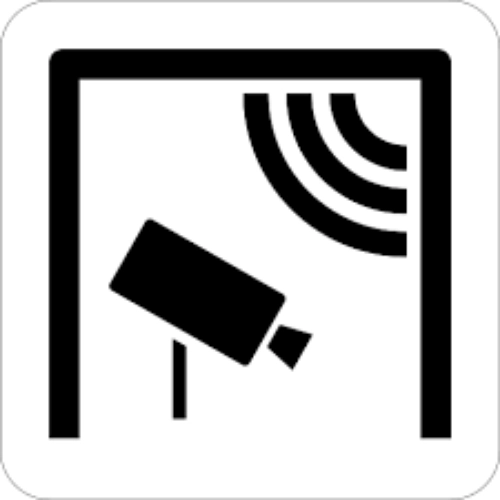
There is a sophisticated and comprehensive toll system in Norway.
You will know you’re on a toll road by the signage of a camera and wifi, but it’s safe to assume if you’re on a major main road or in a city, it will be a toll road.
The sign is sometimes accompanied by another sign with the cost for that stretch of road, but it’s almost impossible to keep a tally of costs.
Now it starts to get complicated! The Norwegian toll system is not straightforward, but this is what you need to do:
Fjord Ferries
From time to time, especially on Norwegian scenic routes, you will need to take a car ferry across a fjord. This is not a fjord cruise but a quick crossing designed to get you from one place to the other as fast as possible, a bit like public transport.
It is not complicated, although it feels odd coming from countries where it’s not the norm. The road stops with no option to take another route, and there is a ramp for a ferry there. Google Maps or your sat nav will know this and direct you accordingly.
There are generally two car ferries passing each other in the middle, and the operation of getting vehicles on and off is pretty slick.
Usually, the ticket seller will come to your vehicle with a mobile card device and dispenser. Tickets cost around NKR100 or €10 for most regular ferry crossings or use your electronic toll tag to pay.
Are you looking for more road trip resources? Check out these top posts…
Hiring a Car in Spain: Tips, Rules & Road Trip Ideas
Smart Road Trip Accommodation Tips: Easy Planning for Every Budget
80+ Road Trip Hacks: Make Every Mile Awesome!
MOT for Long-Term Travel Outside the UK: All You Need to Know
Travelling to Europe? Here’s Why You NEED a GHIC
Ferry from Spain to Morocco: Best Options & Top Tips
Love it? Pin it!
